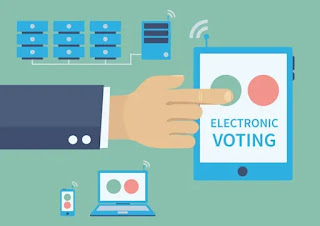How to Enhance Democracy with Technology
Electronic voting systems are technologies that use electronic means to either aid or take care of the tasks of casting and counting ballots in elections and decision-making processes. Electronic voting systems can offer many benefits, such as increased efficiency, accuracy, accessibility, and participation. However, electronic voting systems also face many challenges and risks, such as cyberattacks, fraud, manipulation, and lack of transparency. How can electronic voting systems enhance democracy with technology while ensuring the security, integrity, and verifiability of the voting process and the results? Here are some key aspects and best practices to consider.
Types of Electronic Voting Systems
The first aspect to consider is the types of electronic voting systems that are available and suitable for different purposes and contexts. There are two main types of electronic voting systems: those that use the Internet (I-voting) and those that do not (e-voting). These two types are described as follows:
• I-voting: I-voting is a type of electronic voting system that allows voters to cast their ballots remotely from any location using an Internet-connected device, such as a computer, a smartphone, or a tablet. I-voting can offer convenience, flexibility, and cost-effectiveness for voters and organizers. However, I-voting also poses significant security and reliability challenges, such as hacking, malware, network failures, or denial-of-service attacks.
• E-voting: E-voting is a type of electronic voting system that requires voters to cast their ballots at designated locations using specialized electronic voting machines (EVMs) or computers. E-voting can offer speed, accuracy, and accessibility for voters and organizers. However, E-voting also poses potential security and verifiability challenges, such as tampering, malfunctioning, or lack of auditability.
One example of an I-voting system is Estonia's e-voting system, which is the world's first and most advanced online voting system that allows citizens to vote in national and local elections using their digital ID cards. One example of an E-voting system is India's EVM system, which is the world's largest and most widely used electronic voting system that uses standalone EVMs that are battery-powered and do not require network connectivity.
Blockchain-Based Voting
The second aspect to consider is the use of blockchain-based voting systems that provide a decentralized and transparent way to conduct electronic voting. Blockchain is a distributed ledger technology that records transactions in a secure and immutable way. Blockchain-based voting systems can offer many advantages, such as:
• Decentralization: Blockchain-based voting systems do not rely on a central authority or intermediary to manage or verify the voting process or the results. Instead, they use a network of nodes that validate and store the votes in a distributed manner. This reduces the risk of single point of failure or corruption.
• Transparency: Blockchain-based voting systems allow anyone to view and audit the votes and the results on the blockchain ledger. This increases the accountability and trustworthiness of the voting process and the results.
• Verifiability: Blockchain-based voting systems enable end-to-end verifiability of the voting process and the results. This means that voters can verify that their votes are cast as intended, stored as cast, and counted as stored. It also means that anyone can verify that the results are accurate and consistent with the votes.
One example of a blockchain-based voting system is Scytl, which is a global leader in providing innovative election solutions based on blockchain technology.
Biometric Authentication in Voting
The third aspect to consider is the use of biometric authentication in voting systems that provide a secure and convenient way to identify and verify voters. Biometric authentication is a method of verifying someone's identity based on their physical or behavioral characteristics, such as fingerprint, face, iris, voice, or signature. Biometric authentication in voting systems can offer many benefits, such as
• Security: Biometric authentication in voting systems can prevent identity theft, impersonation, or multiple voting by ensuring that only authorized voters can access the ballot and vote once. It can also prevent coercion or vote buying by ensuring that voters cast their votes freely and privately
• Convenience: Biometric authentication in voting systems can simplify the voter registration and verification process by eliminating the need for passwords, Pins, tokens, or other credentials. It can also enable remote electronic voting by allowing voters to vote from any location using their biometric features.
• Inclusivity: Biometric authentication in voting systems can increase voter participation by making it easier for people who do not have access to traditional identification documents or who have low literacy levels to register and vote using their biometric features
One example of a biometric authentication in voting system is Election Runner, which is a secure and cloud-based online voting platform that allows voters to vote using their fingerprint, face, or voice recognition
Conclusion
Electronic voting systems are technologies that use electronic means to either aid or take care of the tasks of casting and counting ballots in elections and decision-making processes. Electronic voting systems can offer many benefits, such as increased efficiency, accuracy, accessibility, and participation. However, electronic voting systems also face many challenges and risks, such as cyberattacks, fraud, manipulation, and lack of transparency. To enhance democracy with technology, electronic voting systems should consider the following aspects and best practices
• Use the appropriate type of electronic voting system that suits the purpose and context of the election or decision-making process.
• Use blockchain-based voting systems that provide decentralization, transparency, and verifiability
• Use biometric authentication in voting systems that provide security, convenience, and inclusivity
By considering these aspects and best practices, electronic voting systems can enhance democracy with technology while ensuring the security, integrity, and verifiability of the voting process and the results.
For more information Whatsapp on : Click Here

Your words cut through the noise beautifully
ReplyDeleteevoting system